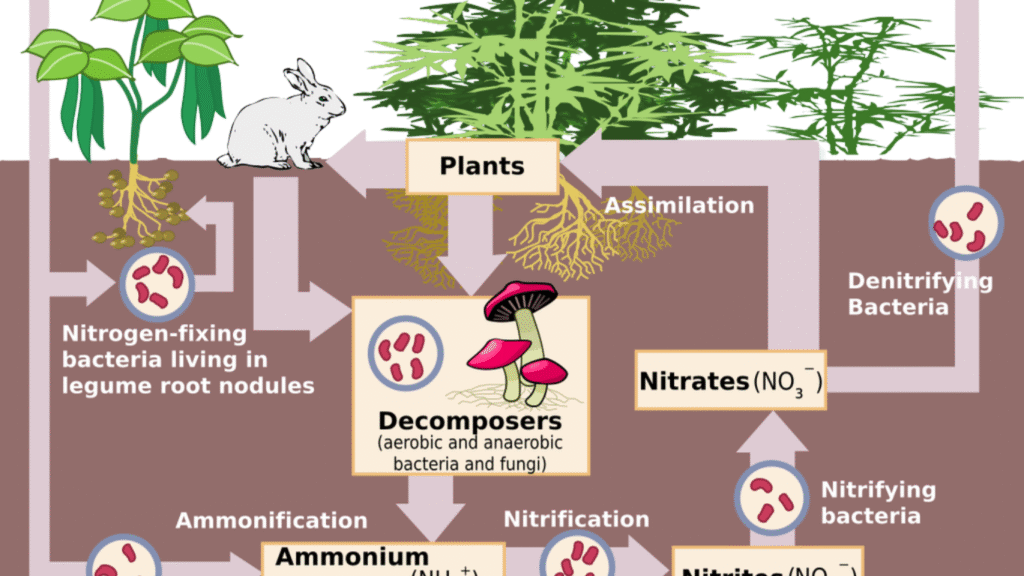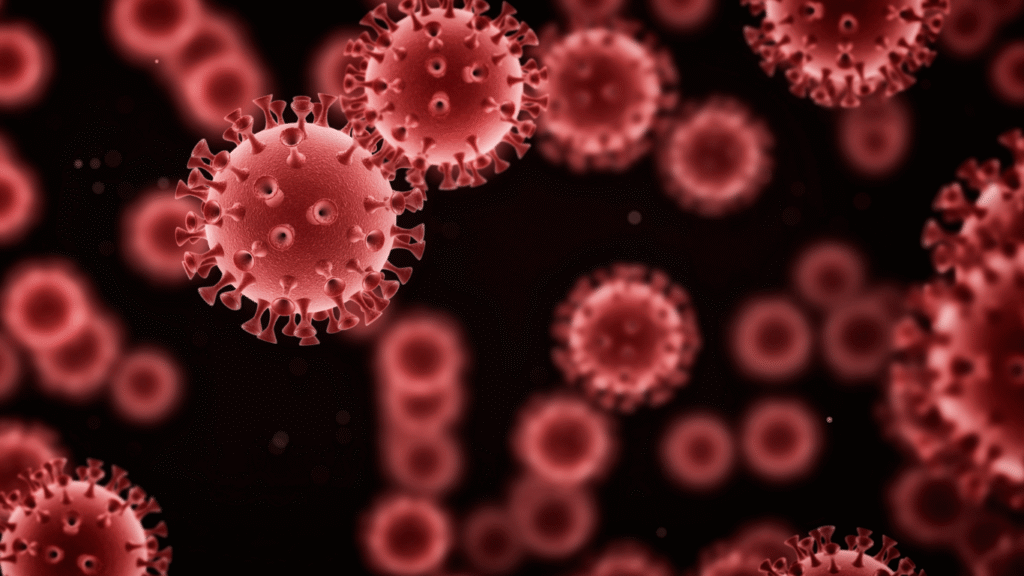By Komal Jaiswal
People often ask me, “What do you feed your plants?”
And I always smile and say, “I feed the soil. The soil takes care of the rest.”
What most of us forget is that plants don’t grow because we give them something.
They grow because we create the conditions for nature to do what she already knows.
At the heart of this quiet dance is something invisible — Nitrogen.
Essential, abundant in the air, but completely useless to plants unless it’s transformed by living beings.

🌬️ Air is Full of Nitrogen. But Plants Can’t Use It.
The air we breathe is almost 78% nitrogen.
But plants can’t drink it straight from the air — they need it fixed into a usable form like ammonium or nitrate. And here’s the secret: plants don’t fix nitrogen.
Microbes do.

🦠 Rhizobium: The Gentle Alchemist
In the roots of legumes — like mung, chana, arhar, and peas — lives a powerful little bacterium called Rhizobium. It doesn’t just sit there. It forms nodules in the roots and literally breathes in nitrogen from the air, converting it into forms the plant can absorb.
It’s a mutual friendship — the plant gives sugars, the microbe gives nitrogen.
🌱 This is why crop rotation matters. After legumes, the soil is richer.
That’s not a theory. It’s living proof of cooperation.
🌿 Azospirillum and Azotobacter: Free Spirits of the Soil
Some microbes don’t need roots. They roam freely in the soil, fixing nitrogen near the rhizosphere — the space just around the roots.
- Azospirillum loves grasses — you’ll find it in the root zones of wheat, maize, bajra.
- Azotobacter works well with non-legumes and is sensitive to synthetic fertilizers.
Both of them thrive in well-aerated, carbon-rich soil.
They don’t survive in sterile, compacted, or chemically loaded land.
🌾 A handful of well-made compost, full of leaf mold and humus, is all they ask for.
🍄 Fungi: The Forgotten Bridge
We often think of fungi as decomposers — but in the garden, they are connectors.
Mycorrhizal fungi wrap themselves around plant roots, forming threads that reach deep into the soil — bringing back phosphorus, zinc, copper, and yes, even nitrogen — in exchange for simple sugars.
They also help with drought tolerance and disease resistance.
But they die with tilling. They go dormant with urea.
They grow when the soil is undisturbed and alive.
🌾 Trace Elements: The Micronutrients That Run the Show
People talk about NPK like it’s the holy trinity. But here’s the truth:
- Zinc activates enzymes.
- Boron helps in flower and fruit formation.
- Calcium builds cell walls.
- Magnesium sits in the heart of chlorophyll.
- Sulphur brings flavor to garlic and onions.
Without these, nitrogen alone can’t do much.
Plants need balance, just like us. Too much of one, too little of another, and things go off-track.
🧂 Even trace minerals come from decomposed leaves, seaweed, wood ash, and natural rock dust. Nature always provides — but only when we stop interrupting her.
🐛 Earthworms: The Soil’s Breath
I don’t measure nitrogen in numbers.
I look for earthworms. If they are wriggling in the bed, I know the soil is breathing. Their castings are full of nitrogen and trace minerals — already digested, balanced, alive.
🌱 Final Thought: Let the Garden Fix Itself
You don’t need to fix nitrogen.
You just need to create the space for nature to do it.
- Stop over-digging.
- Stop flooding with chemicals.
- Start composting.
- Add mulch.
- Grow legumes.
- Let weeds cover the soil until the next sowing.
- Invite the microbes back.
Because the real fertilizer doesn’t come in a bag.
It comes from the life in your soil.
